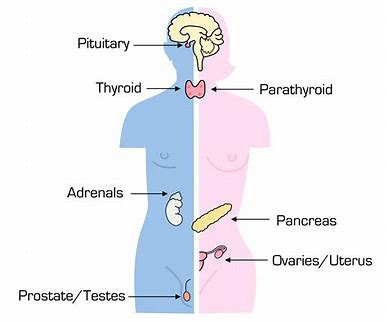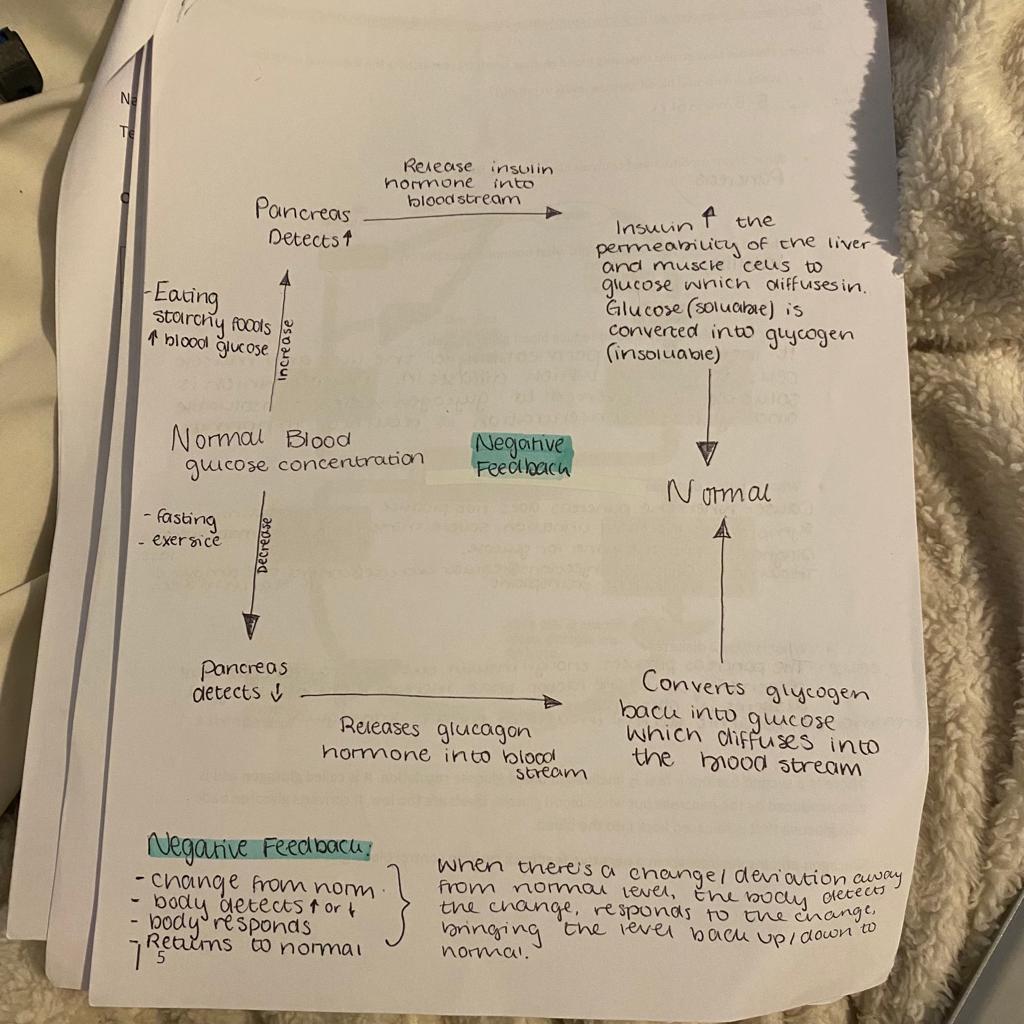hormonal co ordination in humans
Definition:
Hormonal coordination in humans is the process by which the endocrine system regulates and controls various physiological functions in the body through the secretion of hormones. Hormones are chemical messengers that are produced by endocrine glands and are transported through the bloodstream to target cells or organs. Some of the major endocrine glands in humans include the pituitary gland, thyroid gland, adrenal gland, pancreas, and gonads. Hormonal coordination plays a crucial role in regulating growth and development, metabolism, reproduction, and response to stress.
What’s a hormone:
A hormone is a chemical messenger produced by glands in the body that travels through the bloodstream to affect target cells and organs, regulating various physiological and behavioural activities such as growth, metabolism, and reproduction.
The main organs of the endocrine system are the pituitary gland, thyroid gland, adrenal glands, pancreas, ovaries (in females), and testes (in males). 
pituitary gland: Its found in the brain and is the master gland, it secretes several hormones in response to different body conditions, these hormones stimulate endocrine glands which produce further hormones that bring out necessary effects.
insulin: regulates blood glucose levels.

Negative feedback loop explanation:
When starchy food is consumed, blood glucose levels increase. The pancreas detects this rise and releases hormones into the bloodstream, causing insulin levels to increase. Insulin increases the permeability of liver and muscle cells, allowing glucose to diffuse in. The soluble glucose is then converted into insoluble glycogen, leading to a decrease in blood glucose levels and a return to normal levels.
When blood-glucose levels decrease as a result of increased exercise or fasting, the pancreas will detect this decrease and release glucagon hormone into the blood stream, glucagon converts glycogen back into glucose which diffuses into the bloodstream, returning blood glucose levels to normal.
diabetes:
type 1: caused when the pancreas doesn’t secrete enough insulin
symptoms - increased urination, severe thirst, weight loss, fatigue,
diagnosis - test urine for glucose
treatment - insulin injections, regular exercise, control amount of starch in diet, pancreas transplant
type 2: caused by the target cells not responding to the insulin released by the pancreas, a factor which can increase the risk of type 2 diabetes is obesity.
treatment - limit starch intake, regular exercise
adrenaline:
adrenaline is made in your adrenal gland, its known as the fight or flight hormone, meaning its released when we feel stressed, anxious, angry or excited.
what does it do?
- it increases heart and breathing rate
- increases mental awareness
- dilates pupils - (to let in more light)
- causes glycogen to be converted into glucose for respiration (energy)
- diverts blood flow away from digestive system and into muscles
thyroxine:
where is it made?
made in your thyroid glands
what does it do?
- important in the development of the brain in infants
- it controls basal metabolic rate
negative feedback loop for thyroxine:
if thyroxine levels rise, TSH (thyroxine stimulating hormone) levels fall.
if thyroxine levels fall TSH levels rise
TSH is produced by the pituitary gland.
main human reproductive organs: male
- testes (main organ (gonad))
- sperm duct
- penis
- prostate gland
- scrotum
reproductive organs: female:
- ovary (female gonad)
- uterus
- cervix
- vagina
- oviduct
female reproductive hormone - oestrogen
male reproductive hormone - testosterone
Menstrual cycle - hormones:
==F== - FSH - secreted by pituitary gland and causes an egg to mature in ovaries also stimulates production of oestrogen
==O== - oestrogen - secreted by ovarues causes uterus lining to thicken, also inhibits FSH and stimulates LH
==L== - LH - secreted by pituitary gland, causes release of egg from ovaries on day 14 (ovulation)
==P== - progesterone - secreted by empty follicle in ovary, inhibits FSH, LH and maintains uterus lining
Auxins - a hormone found in plants that stimulate growth in plants
Auxins as weed killers - by spraying auxin onto the leaves of a plant, it can trigger rapid, uncontrolled growth, killing them
Phototropism - a plants response to light
Geotropism - a plants response to gravity
Auxins response to uneven light - auxin moves to the unlit side of the shoot, the cells respond by growing more so the shoot bends due to weight, towards the light.
Auxin and even light distribution - auxin will also have an even distribution, so the shoot grows evenly
Auxin in the root - auxin gathers on the lower side, the root grows more on the side with least auxin, making it bend due to gravity and grow downwards, after it has grown down, the auxin becomes evenly spread
Auxin in the shoot - auxin gathers on the lower side, the shoot grows more on the side with most auxin, so it bends and grows up away from the force of gravity, when it has grown up the auxin becomes evenly spread again.
Gibberellins - a plant hormone that is important in initiating seed germination
Different ways to use gibberellins:
- used in the brewing industry, to speed up germination of barley seeds to make malt
- Used to promote flowering throughout the year
- To increase the size of fruit, (spray to replace natural hormone so they grow well)
Using ethene - used to control ripening of fruit, this is useful since firm fruit is easier to transport, when fruit arrives it can be added to the atmosphere (at warm temp) and rapidly ripened to the perfect stage when needed.